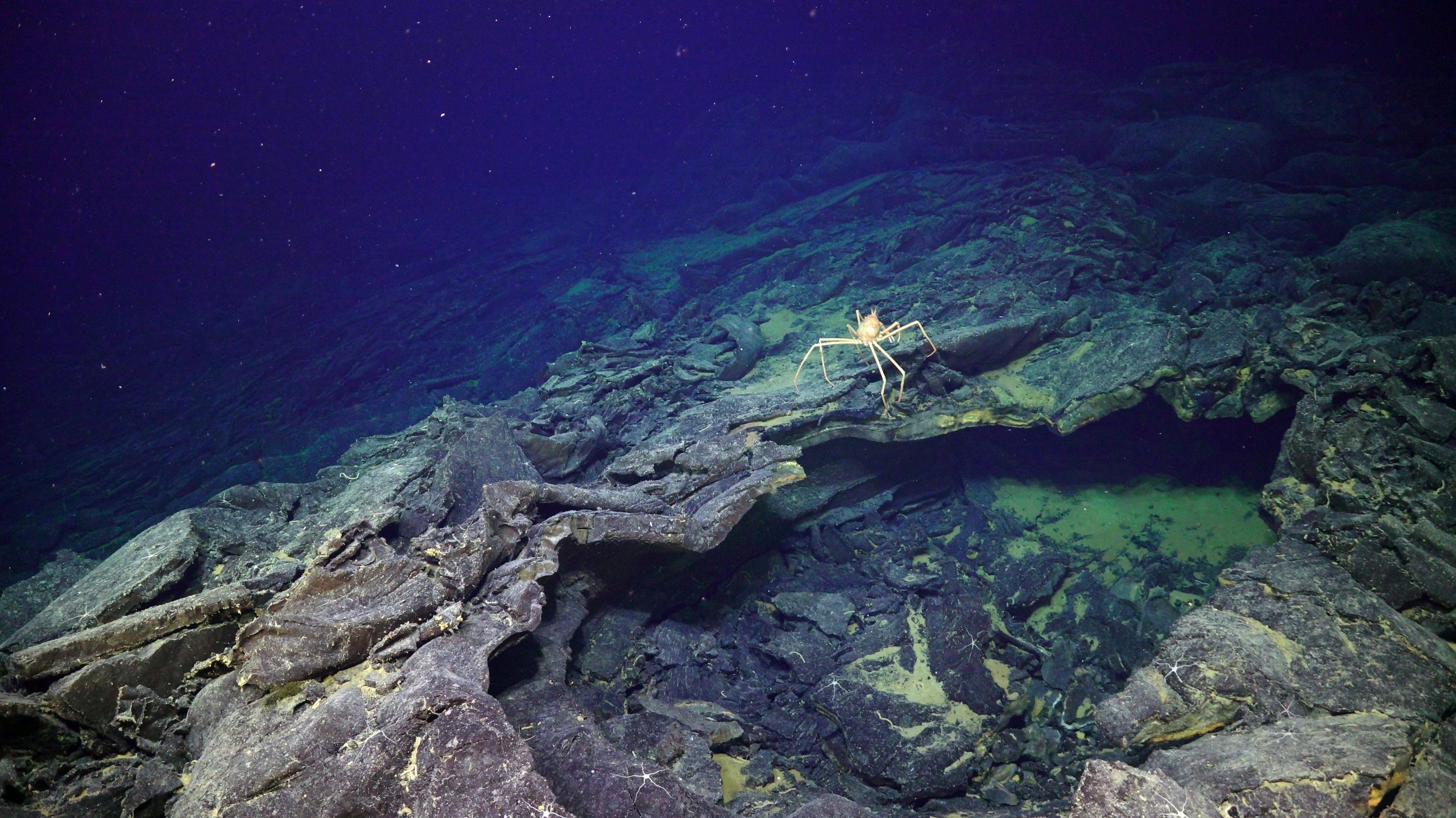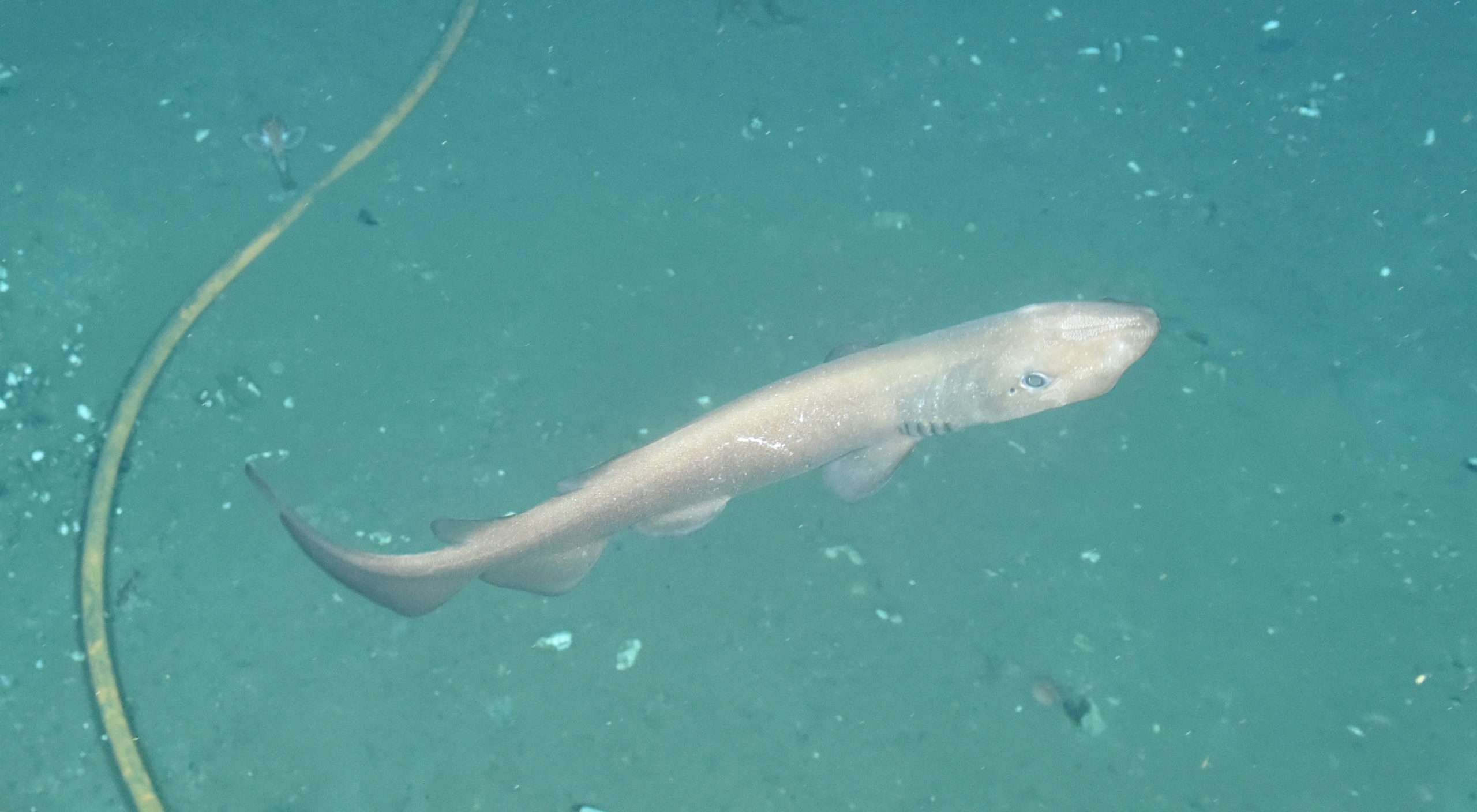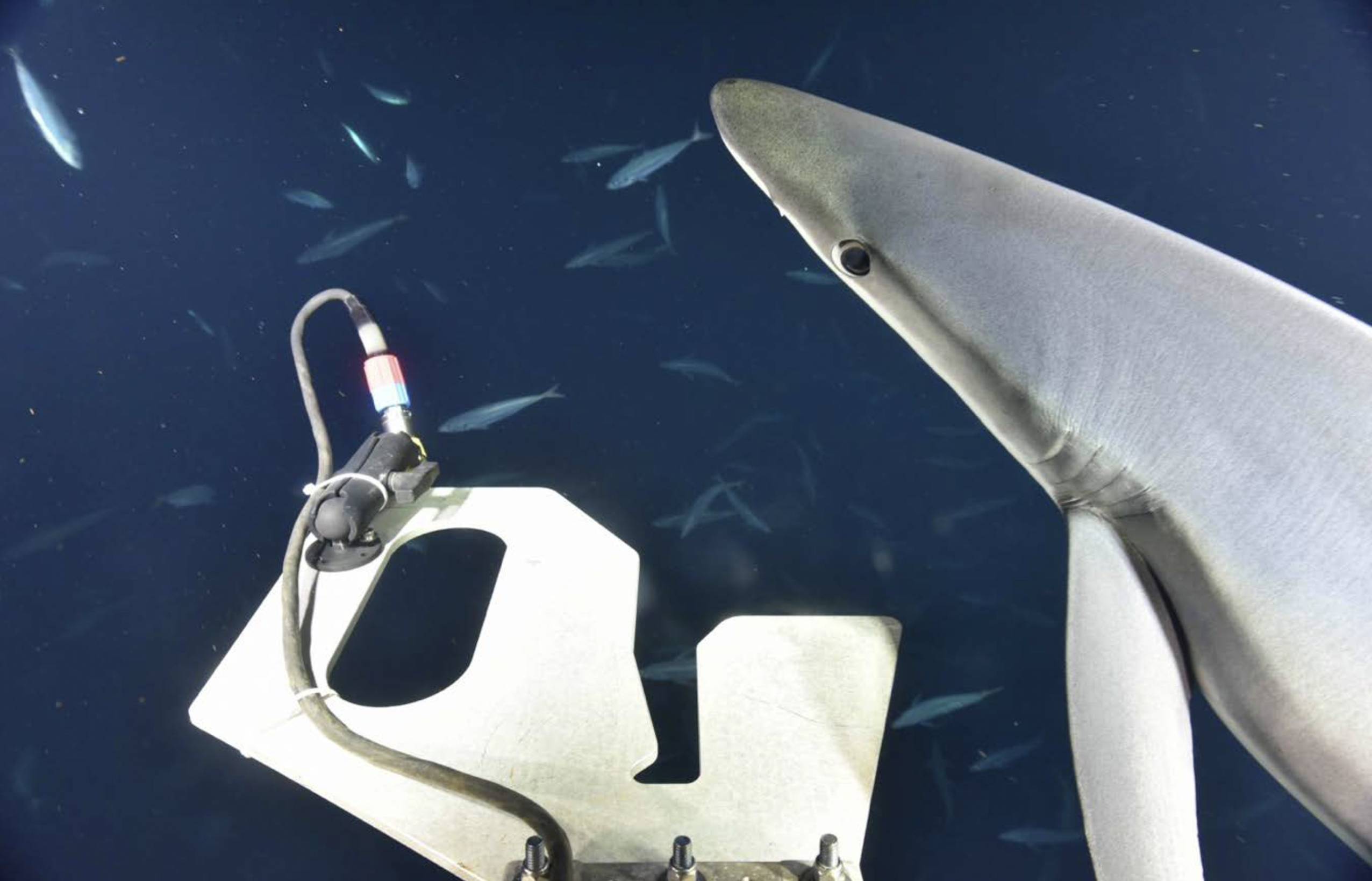Image Archive





























An unidentified sea star (possibly Henricia sp.) near one of the vents during a dive to the International District. It remained next to the chimney, despite the heat exuded by the vent plume. Photo credit: NSF-OOI/UW/CSSF; Dive J2-1381; V21.

A deep-sea crab from the family Lithodidae seen at International District. Photo credit: NSF-OOI/UW/CSSF; Dive J2-1378; V21.

This blue shark was the highlight of the Slope Base Deep Profiler dive as he moved around the ROV Jason. Credit: UW/NSF-OOI/WHOI; Dive J2-1367; V21.

A brown catshark (Apristurus brunneus) at Southern Hydrate Ridge, seen during a site survey during VISIONS'22. Credit: UW/NSF-OOI/CSSF, ROPOS Dive R2224, V22.

An aggressive blue shark approaches the ROV ROPOS at the Oregon Offfshore Site. Credit: UW/NSF-OOI/CSSF; ROPOS Dive R2231, V22.

This blue shark was the highlight of the Deep Profiler Dive at Slope as it moved in an out from in front of the ROV’s camera.Credit: UW/NSF-OOI/WHOI; Dive J2-1367; V21.

Beautiful chains of salps swim around the top of the Shallow Profiler Mooring at Axial Base. Credit: UW/NSF-OOI/WHOI; V21.

A swarm of beautiful salp aggregates swim around the Shallow Profiler Mooring at Axial Base at a water depth of ~ 600 ft. Credit: UW/NSF-OOI/WHOI; V21.

Purple hagfish, speckled sole, red rockfish, starfishn and crabs thrive at Southern Hydrate Ridge with diverse substrates to call home. Credit: UW/OOI-NSF/WHOI. V20.

The 12 ft across platform on the Slope Base Shallow Profiler mooring is home to a variety of fauna, thriving in the nutrient-rich currents. Credit: UW/NSF-OOI/WHOI; V20.

A rockfish hangs out with soft corals at the carbonate Pinnacle deposit at Southern Hydrate Ridge. Credit: UW/NSF-OOI/WHOI. V20.

Beautiful soft corals are ubiquitous on carbonate deposits that form the Pinnacle at Southern Hydrate Ridge. Credit: UW/NSF-OOI/WHOI. V20.

A sole lounges on the sedimented seafloor at Southern Hydrate Ridge. Credit: UW/NSF-OOI/WHOI. V20

A rockfish hangs out with soft corals at the carbonate Pinnacle deposit at Southern Hydrate Ridge. Credit: UW/NSF-OOI/WHOI. V20.

Beautiful soft corals are ubiquitous on carbonate deposits that form the Pinnacle at Southern Hydrate Ridge. Credit: UW/NSF-OOI/WHOI. V20.

A sole lounges on the sedimented seafloor at Southern Hydrate Ridge. Credit: UW/NSF-OOI/WHOI. V20

A 'Big Red' Jellyfish swims past Jason at the Slope Base site ~ 68 miles offshore. Credit: UW/NSF-OOI/WHOI. V20.

Crabs have taken "roost" in Primary Node PN1B. Credit: UW/NSF-OOI/WHOI. V20

Crabs swarm Primary Node PN1B. Credit: UW/NSF-OOI/WHOI. V20

The ROV Jason prepares to open the doors to Primary Node PN1B, which in addition to providing power and bandwidth to the RCA, serves apparently as a crab house. Credit: UW/NSF-OOI/WHOI. V20.

A Cedar Waxwing watches Jason onboard the R/V Thompson during VISIONS'20. Credit. I. Borchert, University of Washington. V20

A Cedar Waxwing rests atop an RCA platform on the fantail of the R/V Thompson. Credit: M. Elend, University of Washington, V20

A spider crab explores a small collapse pit floored by glass lava talus on the summit of Axial Seamount. Credit: UW/NSF-OOI/WHOI: V20.

A spider crab delicately walks across glassy rubble in a small collapse pit. Credit: UW/NSF-OOI/WHOI: V20.

A spider crab at the International District inspects the edge of a small collapse zone. Credit: UW/NSF-OOI/WHOI. V20.

A brush is used to clear away anemones that are hiding access to the junction box at the Oregon Shelf site. Credit: UW/NSF-OOI/WHOI; V20

A blob sculpin (Psychrolutes sp.) aka blobfish, at International District on Axial Seamount during VISIONS'20. Credit: UW/NSF-OOI/WHOI V20.

Beautiful purple-blue ciliates, white filamentous bacteria and tube worms with red hemoglobin-filled plumes, and limpets colonize the outside of the Mushroom edifice at ASHES. Credit: UW/NSF-OOI/WHOI V20.
- Anemone
- Animal
- Arthropod
- ASHES
- Axial
- Axial Base
- Axial Biology
- Axial Caldera
- Bacteria
- Basalt Lava
- BEP
- Biofouling
- biolgoy
- Biology
- Camds
- Camera
- Camhd
- Central Caldera
- Ciliates
- Cnidaria
- Coastal Biology
- Crab
- Deep Profiler Mooring
- Dive Highlights
- Eastern Caldera
- Echinoderms
- Endurance Array
- Engineering Team
- ENLIGHTEN 10
- Exploratorium
- Fish
- Geology
- HD Camera
- HPIES
- Hydrate Ridge
- Hydrates
- Hydrophone
- Hydrothermal Vents
- Illustration
- Inshore 80 Meters
- Instrument
- International District
- J-BOX
- Jason
- Jellyfish
- Junction Box
- K12
- Lava
- Mollusk
- Moorings
- Nodes
- Nudibranch
- Octopus
- OOI
- Oregon Offshore
- Oregon Offshore 600 m
- Oregon Shelf
- Oregon Slope Base
- People
- PN1B
- PN1D
- Polychaetes
- PPSDN
- Primary Node
- RASFL
- ROCLS
- ROPOS
- ROPOS Dives
- ROV Team
- RV Revelle
- RV Sikuliaq
- RV Thompson
- Salp
- Sample
- SC13
- Science Team
- Sea Cucumber
- Sea Star
- Sea Urchin
- Seafloor
- Seismometer
- Sensors
- Shallow Profiler Mooring
- Shark
- Shipboard
- Shore Station
- Slope Base
- Smoker
- Soft Coral
- Southern Hydrate Ridge
- Sponge
- Squid
- Students
- Students & Guest Participants
- Tmpsf
- Tubeworms
- VISIONS 11 Leg 1
- VISIONS 11 Leg 2
- VISIONS 11 Viewers
- VISIONS 13
- VISIONS 14
- VISIONS 15
- VISIONS 16
- VISIONS 17
- VISIONS 18
- VISIONS 20
- VISIONS 22
- VISIONS 23
- Visualization
